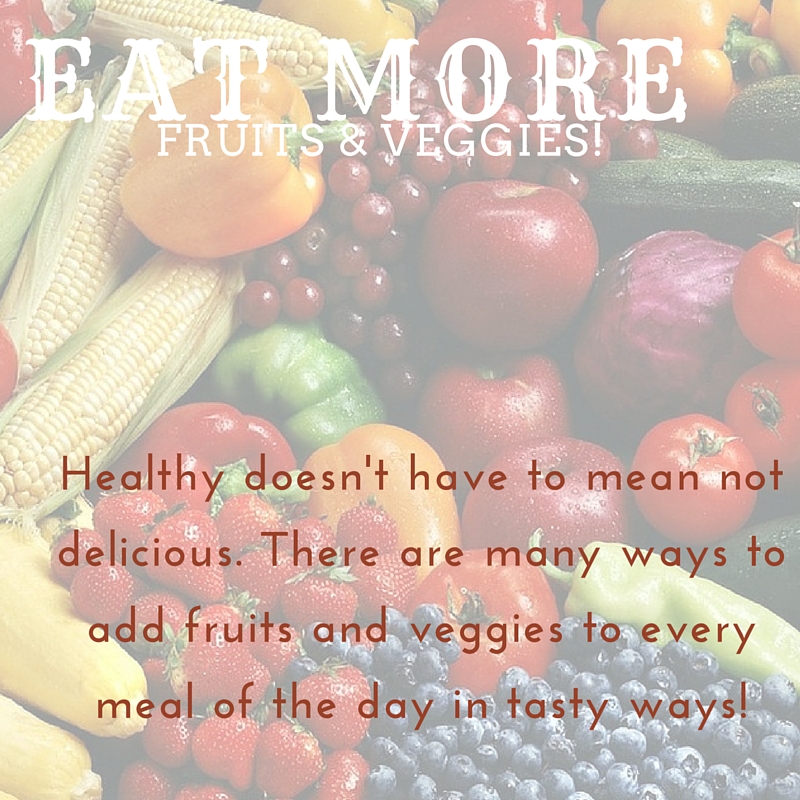
7 Ways to Include More Fruits and Vegetables in Your Daily Diet
You probably hear it all of the time, but eating well is very important for general life, and also for recovery. We want to bring you the best support and help that you need to build a happy and healthy lifestyle. Therefore, we are providing some helpful ways for you to unite healthy eating with your recovery. As you know, eating healthy improves mood, helps you control weight, boosts energy, promotes better sleep, and can even leave you with better looking skin. Make these small but significant steps to build healthier eating habits, which will give you the basics for healthy living.
1.) Taste the rainbow.
Something you might find helpful about fruits and veggies is that they practically tell you what they are good for. For example, if the fruit or veggie you are eating is green, this means that it is high in Vitamins A and C and likely also has calcium in it. These are helpful for fighting diabetes and cancer. Red fruits and veggies have heart healthy elements like manganese and fiber. There is no “perfect” fruit or vegetable, though, so to have a completely healthy spectrum of foods, try to incorporate foods of every color into your diet. Click here for some more information about which colors mean which vitamins.
2.) Add extra, or even double it!
When you are making dinner, there’s nothing that says you can’t double the amount of veggies your recipe calls for. Better yet, if your recipe calls for something like red bell peppers, you can likely also add some green or yellow bell pepper as well. If your salad calls for spinach, add a little kale.
3.) Snack.
One of the best things about fruits and veggies is that they are a great on-the-go type of snack. If you’re used to a bag of chips as your daily snack, consider replacing it with a bag of dried fruit or even just a fresh apple or banana. Doing this consistently can help you form a habit so that eventually you won’t even be thinking about the unhealthy snacks you used to crave.
4.) Get creative.
Who says you have to eat fruits and veggies raw? Maybe you don’t struggle with fruits because of their naturally sweet taste, but veggies can be hard to get excited about. Try to eat your celery or carrots with hummus (there are lots of different flavors of that you can try, too!) or make your own salsa like this watermelon salsa from Taste of Home. Smoothies are a popular choice, too, and there are many recipes that you can try which incorporate kale or spinach.
5.) Put your triggers in check.
One of the hardest parts about eating healthier is breaking the habit of eating unhealthy, first. Ask yourself what your triggers are. Do you feel the need to eat something every time you go into the kitchen? Do you notice that whenever you are feeling stressed, bored, or any strong emotion that you want to eat more often? These are important because although eating good things is important, it will be harder to create a habit of healthy eating when you are also used to consistently filling up on foods that are not good for your health.
6.) Be adventurous.
Food (and healthy food) is not something that should scare you. Even if you just “taste” something new everyday, it’s a good start! Pick a small portion of a vegetable you’ve never had and give it a small try. Go to your local farmers market and ask the vendors how to pick a ripe fruit. For the record, most fruits and veggies are the best and tastiest to eat when they are in season. Find ways to freeze, can, or otherwise store fruits and veggies when you buy them in season so that you can enjoy them later on.
7.) Do some swapping.
A really common practice for incorporating more fruits and veggies is to start swapping your ingredients. For example, some people like to use applesauce in their bread or other baked goods instead of refined sugar. You can also use coconut oil in many recipes as a substitute for butter. Try these sugarless cookies or these 10 Sweet Recipes from the Huffington Post. Although not everything will taste exactly the same, swapping consistently can help you develop a palate that will cause you to crave better food.
